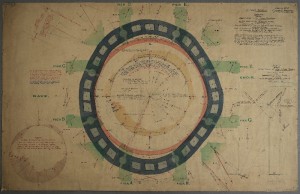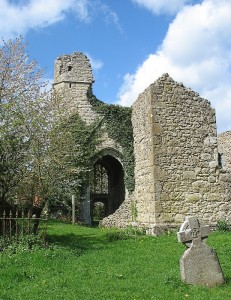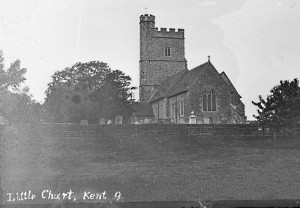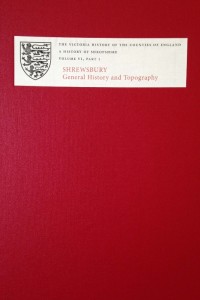The Herts at War Project – A Commemoration InitiativeThe 4th August 2014 marks the commencement of the 100th anniversary of the First World War. One Hertfordshire group who are working hard to recognise this hugely significant event are the Herts at War team. The project sprang out of a series of individual historical research assignments, and collaboration with Letchworth’s Highfield School History Department to uncover the wartime exploits of local soldiers in the Great War. The tales of bravery and heroism which emerged seemed to demand that the stories be told for posterity, education, awareness and as an act of remembrance. This community led project has been created to commemorate the diverse experiences of the men and women of Hertfordshire during the First World War. Whether it be a soldier fighting on the frontline, a Zeppelin Raid on a county town, a Conscientious Objector harangued in the street or an anxious mother waiting for a child that would never return, these experiences shaped and changed both the county and the country as we know it today. Amongst other things, the project is helping local people and organisations to research and share stories about what the First World War meant for their communities. This activity is being led by Project Manager, Dan Hill, with support from a team of volunteers who through its website, a pop-up museum exhibition, live events and bespoke battlefield tours hope to bring the forgotten story of the war back to the county. As the team is made up largely of heritage workers, professional historians and teachers the founding principle of the project was always to uncover and tell Hertfordshire’s forgotten story. The aim is to give the public new insight into the county’s history and will also run workshops with local schools and provide teaching resources which will be freely available to download from the website. It is not looking to simply impart knowledge, but to involve the countywide community in the project by providing new stories and driving the direction of our research. We also want the community involvement in the pop-museum, writing articles for the website and live events; such as an initiative where local schools will put on plays written and performed by Hertfordshire residents during the war.
The Hertfordshire Regiment
One aspect the team are looking at is the story of the 1st Battalion, Hertfordshire Regiment, who were part of the Territorial Army. During November 1914 British troops, including men of the Hertfordshire Regiment, successfully resisted all German attempts to capture the small Belgian town of Ypres (Ieper) and march on to the Channel coast. The German Army did, however, manage to occupy a ring of higher ground that overlooked the town on the east and south which allowed their artillery to fire down on the British trenches and to reduce Ypres, and its neighbouring villages, to ruins, and made the Salient one of the most dangerous places on the Western Front. In 1915 the Battalion were engaged in actions at Cuinchy, where Private Alfred Burt (pictured) won the Victoria Cross, one of only two awarded to members of the Battalion in the Great War. In May of that year they fought at the Battle of Festubert and in September were in action at the Battle of Loos. 1916 saw the Battalion engaged in the Battles of the Somme, including being involved in the Battle of the Ancre Heights in October, as well as in the Battle of the Ancre in November. By 1917 the Battalion were heavily engaged in the opening Battles of Ypres 1917, also called the Third Battle of Ypres and Passchendaele, when the it lost over 450 men during their assault on St. Julien, part of the Battle of Pilkem. The Herts at War project is currently busy raising funds for the erection of a memorial in St. Juliaan to the men of the Hertfordshire Regiment who were lost in this action. The Battalion were also involved in the Battle of Langemarck in August 1915, the Battle of the Menin Road and the Battle of Polygon Wood in September, as well as the Second Battle of Passchendaele in October.
During 1918, the battalion was again heavily engaged in the First Battles of the Somme 1918, also known as the German Spring Offensive, Operation Michael or Kaiserschlacht. They were heavily involved in the Battle of St Quentin, the actions on the Somme crossings and the Battle of Rosieres.
By April they were also engaged in the Battle of the Lys, namely the First and Second Battles of Kemmel as well as the Battle of Scherpenberg, during which time their already exhausted Division fought as Composite Battalions. After the Battalion was supplied with fresh troops it was engaged in the Second Battles of the Somme, also referred to as the opening phase of “The 100 Days”. They saw service at the Battle of Albert and the Second Battle of Bapaume and by September were involved in the Battles of the Hindenburg Line, specifically at the Battle of Havrincourt and the Battle of the Canal du Nord, as well as the Battle of Cambrai and the subsequent pursuit to the Selle in October. It was at the Battle of Havrincourt that Second Lieutenant Frank Young won the Battalions second Victoria Cross. In the Final Advance in Picardy, they were engaged in their last series of actions, specifically in the Battle of the Selle in October and the Battle of the Sambre in November. Their final day in action came four years to the day from their arrival in France on 9th November 1914. The armistice two days later also marked the fourth anniversary of the first time they came under fire. The Battalion was gradually wound down and finally disembodied in March 1919, although it was reformed as a Territorial Army unit again in February 1920.
The Roll of Honour
When it comes to the military aspect of the county’s sacrifice, the fact of the matter is that 4 out of 5 men who served in The Great War came home, many carrying untold psychological damage that even today we cannot comprehend, although of course there were thousands of Hertfordshire’s young men who did not return. With this in mind the Herts at War website has been created as an ongoing project where members of the public will be able to actively participate in the development of the site. One major aspect to the project is the Roll Of Honour, which aims to provide profiles of the men and women of Hertfordshire whose names are recorded on over 700 memorials throughout Hertfordshire. This section of the website will be broken down into individual county locations and then into personnel files on all servicemen who fell from that location. The Roll of Honour team, led by Jonty Wild and Paul Johnson, aim to research and publish the story of every single serviceman who made the ultimate sacrifice and who called Hertfordshire home. The ultimate aim of the Roll of Honour is to compile a detailed historical record of each person’s pre-war life and military service, uncovering thousands of forgotten stories and preserving them for future generations in the process.
Hertfordshire Life
Despite the turmoil caused by the conflict across the world life had to continue across the county. In every town and village workers continued in their trades and industries vital to both the war effort and keeping the county intact. Schools, pubs and social clubs continued to open their doors in a bid to maintain a semblance of ordinary life. The project is looking at a number of aspects that impacted upon county life including Belgian refugees, who totalled over a quarter of a million people, and were the largest refugee movement in British history. Towns across Hertfordshire became home for many of these refugees for the four year period of the war. Conscientious Objectors, also known as ‘conscies’ or C.O’s, were men who refused to fight in the war on the basis of religious and moral grounds, and were a sign that not everybody was as enthusiastic about the war as the government would have liked. By 1916, with the numbers of volunteers for the army dwindling, conscription was introduced which forced young, able bodied men to sign up to the armed forces. A ‘conscience clause’ was added whereby those who had a “conscientious objection to bearing arms” were freed from military service. Conscientious Objectors came from across Hertfordshire, in particular the often socialist and independent thinking residents of the Garden Cities. The project intends to widen the level of knowledge on this often forgotten aspect of the Great War and its effect on the people of the county.
The outbreak of the war saw a wave of xenophobia sweep the nation and many Germans nationals who were considered a threat to the nation were sent to internment camps for the duration of the war. Hertfordshire was no exception when it came to the provision of shelter for German Nationals with Libury Hall, north of Ware, becoming the county’s largest internment camp. Other minor camps also existed at Ashwell, Baldock, Berkhampstead, Bishop’s Stortford, Braughing, Buntingford, Hemel Hempstead, London Colney, Panshanger, Rickmansworth and Standon.
Zeppelin Raids
It was in May 1915 that Zeppelin bomber raids were first directed at London, becoming an increasingly regular occurrence in what has become known as the ‘First Blitz’. As the flight path from the North Sea crossed Hertfordshire there were isolated incidents in which the county came under Zeppelin attack. At first British defences were totally inadequate to deal with the Zeppelin threat. However, by 1916 a range of anti-airship defence measures were introduced. Many more guns were deployed, and searchlights. Fighter aircraft were also sent against them. British defences learnt to pick up their radio messages, so had warning of their approach, and a central communications headquarters was set up. It was realised that Zeppelins were extremely vulnerable to explosive shells, which set light to the hydrogen, often in spectacular fashion. Zeppelin raids were called off in 1917, by which time 77 out of the 115 German Zeppelins had been shot down or totally disabled. Raids by heavier than air bombers continued, however. By the end of the war over 1500 British citizens had been killed in air raids, including a number in Hertfordshire.
Volunteers
Our volunteers are the driving force behind the project and we are proud to be ever increasing in numbers and knowledge through the diverse team that share our common goal. We would like volunteer help to collect as much data as possible, check its accuracy, and organise it so that it can be linked to our interactive website. This will bring together a wide range of sources and help communities to explore their past and prepare centenary commemorative events. If you share our aim and would like to be involved in researching the men and women from your local town then why not visit the website at www.hertsatwar.co.uk or send the team an e-mail at info@hertsatwar.co.uk and join our ranks.










